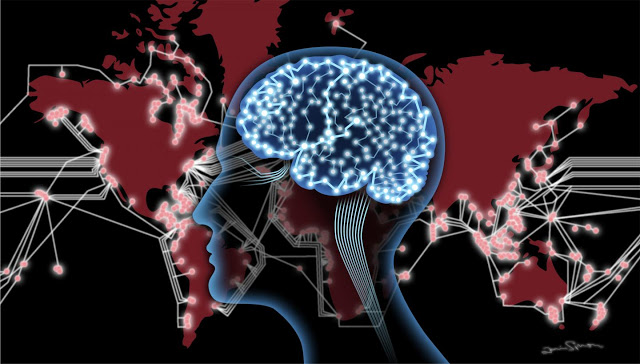

| Online: | |
| Visits: | |
| Stories: |

| Story Views | |
| Now: | |
| Last Hour: | |
| Last 24 Hours: | |
| Total: | |
Algorithm Used for The Internet Is Also at Work in The Human Brain
“The founders of the Internet spent a lot of time considering how to make information flow efficiently,” says Salk Assistant Professor Saket Navlakha, coauthor of the new a study published online in Neural Computation on February 9, 2017. “Finding that an engineered system and an evolved biological one arise at a similar solution to a problem is really interesting.”
Salk scientist finds similar rule governing traffic flow in engineered and biological systems.
Credit: Salk Institute
Navlakha, who develops algorithms to understand complex biological networks, wondered if the brain, with its billions of distributed neurons, was managing information similarly. So, he and coauthor Jonathan Suen, a postdoctoral scholar at Duke University, set out to mathematically model neural activity.
Because AIMD is one of a number of flow-control algorithms, the duo decided to model six others as well. In addition, they analyzed which model best matched physiological data on neural activity from 20 experimental studies. In their models, AIMD turned out to be the most efficient at keeping the flow of information moving smoothly, adjusting traffic rates whenever paths got too congested. More interestingly, AIMD also turned out to best explain what was happening to neurons experimentally.
It turns out the neuronal equivalent of additive increase is called long-term potentiation. It occurs when one neuron fires closely after another, which strengthens their synaptic connection and makes it slightly more likely the first will trigger the second in the future. The neuronal equivalent of multiplicative decrease occurs when the firing of two neurons is reversed (second before first), which weakens their connection, making the first much less likely to trigger the second in the future. This is called long-term depression. As synapses throughout the network weaken or strengthen according to this rule, the whole system adapts and learns.
“While the brain and the Internet clearly operate using very different mechanisms, both use simple local rules that give rise to global stability,” says Suen. “I was initially surprised that biological neural networks utilized the same algorithms as their engineered counterparts, but, as we learned, the requirements for efficiency, robustness, and simplicity are common to both living organisms and the networks we have built.”
Understanding how the system works under normal conditions could help neuroscientists better understand what happens when these results are disrupted, for example, in learning disabilities. “Variations of the AIMD algorithm are used in basically every large-scale distributed communication network,” says Navlakha. “Discovering that the brain uses a similar algorithm may not be just a coincidence.”
The work was funded by the Department of Defense, Army Research Office.
Contacts and sources:
Salk Institute for Biological Studies:
Source: http://www.ineffableisland.com/2017/02/algorithm-used-for-internet-is-also-at.html


